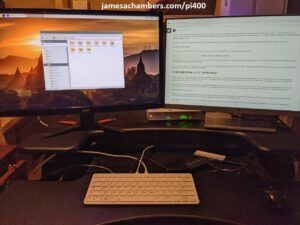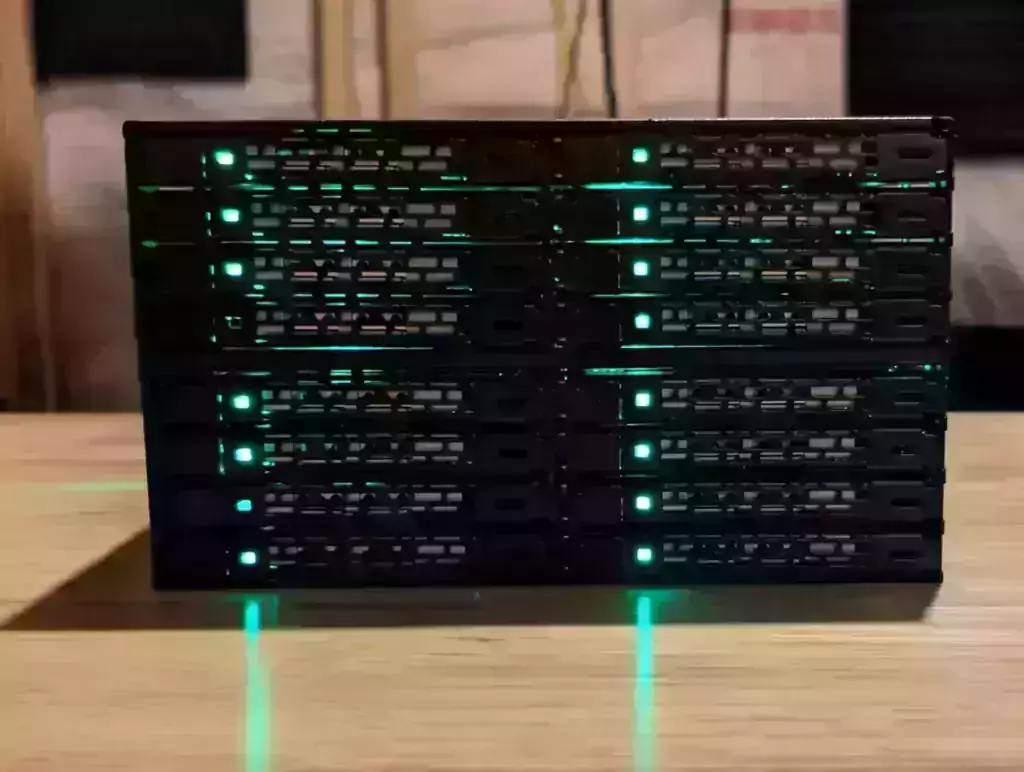
I have a *lot* of 2.5″ SATA drives around the house that have collected from over the years from various devices. Often these drives have useful data on them or aren’t big enough to justify using on their own. The absolutely monstrous ICY DOCK 16 bay 2.5″ SAS/SATA backplane cage solves all of these problems and lets you hot swap (change out the drives while the OS is running) drives live in your OS!
In this guide I’ll cover how what I needed to actually set up something like this and my advice for people who are interested in these same type of hot swappable / RAID capabilities. I’ll also share the “sweet spot” recommendation to get the most bays for the least money if you’re on a tight budget. Let’s get started!
Hardware Used

The ICY DOCK MB516SP-B 16 bay enclosure is an absolute monster hot swappable drive cage w/ backplane. Fits 16 x 5-7mm 2.5” SATA/SAS drives. Can be used in a RAID configuration or as 16 standalone drives. It can be mounted in 2 5.25″ drive bays (common in larger desktops to have several of these slots, usually not used with a blank faceplate over it) or you can just use it right on the bench like I am.
Links: Amazon.com*, Amazon.ca*, Amazon.com.au*, Amazon.co.jp*, Amazon.co.uk*, Amazon.de*, Amazon.es*, Amazon.fr*, Amazon.it*, Amazon.nl*, Amazon.pl*, Amazon.se*, Amazon.sg*

The Adaptec 71605 RAID Storage Controller has a whopping 4 SFF-8643 mini-SAS connectors which is how many we need to handle the 16 bay cage (1 connector per 4 drives, so 4 connectors total for 16 drives). Supports RAID 0/1/1E/5/6/10/50/60. Expensive compared to 2 connector cards, but cheap compared to other 4 connector cards. Plug and play with Windows 10 and compatible with Linux as well!
Links: Amazon.com*, Amazon.ca*, Amazon.com.au*, Amazon.co.jp*, Amazon.co.uk*, Amazon.de*, Amazon.es*, Amazon.fr*, Amazon.it*, Amazon.nl*, Amazon.pl*, Amazon.se*, Amazon.sg*
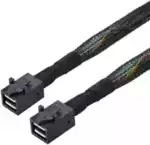
Internal Mini SAS HD Cable SFF-8643 to SFF-8643 (3.3ft extended length) to make it much easier to work with in towers and on the bench. Cables are not included with the cage so keep that in mind if you don’t have any!
Links: AliExpress*, Amazon.com*, Amazon.ca*, Amazon.com.au*, Amazon.co.jp*, Amazon.co.uk*, Amazon.de*, Amazon.es*, Amazon.fr*, Amazon.it*, Amazon.nl*, Amazon.pl*, Amazon.se*, Amazon.sg*
Alternative 8 Bay Option

The ICY DOCK MB998IP-B 8 bay enclosure brings the mounting space requirement down to a single 5.25″ bay. It also brings your RAID / mini-SAS card down dramatically as well. This is the option most people that want a hot swappable bay setup like this should get unless they know for sure that 8 bays won’t be enough! More widely available than the 16 bay version.
Links: Amazon.com*, Amazon.ca*, Amazon.com.au*, Amazon.co.jp*, Amazon.co.uk*, Amazon.de*, Amazon.es*, Amazon.fr*, Amazon.it*, Amazon.nl*, Amazon.pl*, Amazon.se*, Amazon.sg*
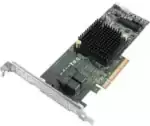
The Adaptec 7805 is the 2 port version of 71605 from the “Series 7” family. Featuring 2x SFF-8643 mini-SAS connectors. This is 1 connector per 4 drives so 2 for the 8 bay version. Supports RAID 0/1/1E/5/6/10/50/60. It is about a third of the price of the 4 port version so it’s dramatically cheaper to use this card with an 8 bay cage.
Links: AliExpress*, Amazon.com*, Amazon.ca*, Amazon.com.au*, Amazon.co.jp*, Amazon.co.uk*, Amazon.de*, Amazon.es*, Amazon.fr*, Amazon.it*, Amazon.nl*, Amazon.pl*, Amazon.se*, Amazon.sg*
Overview
The ICY DOCK lets you access 16 drives independently or in a RAID configuration. This is awesome because that means depending on your needs you will actually have 16 additional drives in Windows/Linux with this enclosure connected!
The trays fit 2.5″ SSDs and HDDs from 5mm-7mm in length. This is typically the size of a laptop drive but most standard size SSDs will be the 2.5″ laptop form factor (will fit the trays). I do have some older HDDs that came in desktops and are actually taller than 7mm and won’t fit but they are very old and not incredibly common anymore.
Here’s a shot of the hot swappable tray system in action:

You can press the lever/button on the left to eject the drives. The trays are easily attached with 4 standard screws:
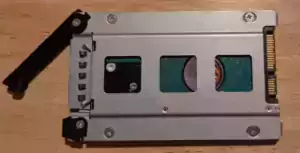
Every 4 drives requires a SATA power connector and a SFF-8643 mini-SAS connector. That means for the 16 bay version 4 mini-SAS connections are required. The rear data connections look like this:
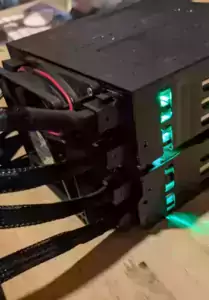
The SATA power connections are the standard SATA power connections from your power supply. I was able to connect all 4 slots with just one connection to my modular power supply (1 connection to the PSU yields 4 SATA power connectors). Here’s the SATA power connections:
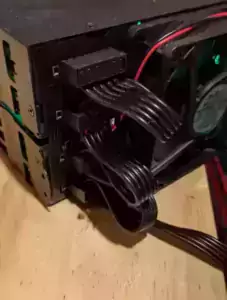
Notice that there is also a fan. This comes preinstalled and actually has a control switch you can see in the above screenshot right below the 2nd SATA power connector from the top with a “H” setting for high and “L” for low. This is great because 16 drives operating at once can generate a lot of heat which can cause failures. The fan keeps air moving across the drives pulling heat off them via the air.
RAID Card Requirements
For every 4 drives you have you need one SFF-8643 connection. That means that the 16 bay version has 4 connectors and the 8 bay version has 2 connectors. This makes a huge impact on how expensive the RAID card you are going to need will be.
A 2 connector RAID card typically costs less than $100 whereas a 4 connector card will typically be 2-3x that or more. The Adaptec is a long trusted line of RAID cards that are relatively inexpensive. They have plug and play support with Windows / Linux. There are additional configuration utilities you can use to utilize the hardware RAID capabilities on the card or can also control it through software (Disk Management on Windows).
Hardware RAID is recommended because it’s way faster than emulating it using software!
Adaptec RAID Configuration (MaxView Storage Manager)
Here’s what the RAID card looks like in the motherboard:
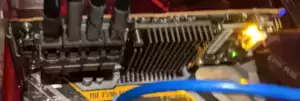
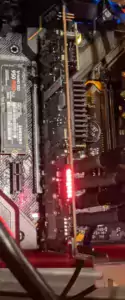
It’s pretty straight forward to connect all these. The only tricky part is getting the Adaptec software. Grab the software from: the official Adaptec Storage Manager web site.
Look for “Storage Manager” and then you should see a “Storage Manager Downloads”. This will let you download the MaxView storage manager. Choose the version that matches your OS. For example for Windows you’d grab: maxView Storage Manager v2.05.22932 for 64-bit Windows
Install the utility with default settings. Once it’s finished if you’re on Windows you should see a desktop shortcut for “maxView Storage Manager”. If you’re not on Windows it doesn’t matter, because all the shortcut does is launch your web browser to the storage service running on your computer at http://localhost:8443/maxview/manager/
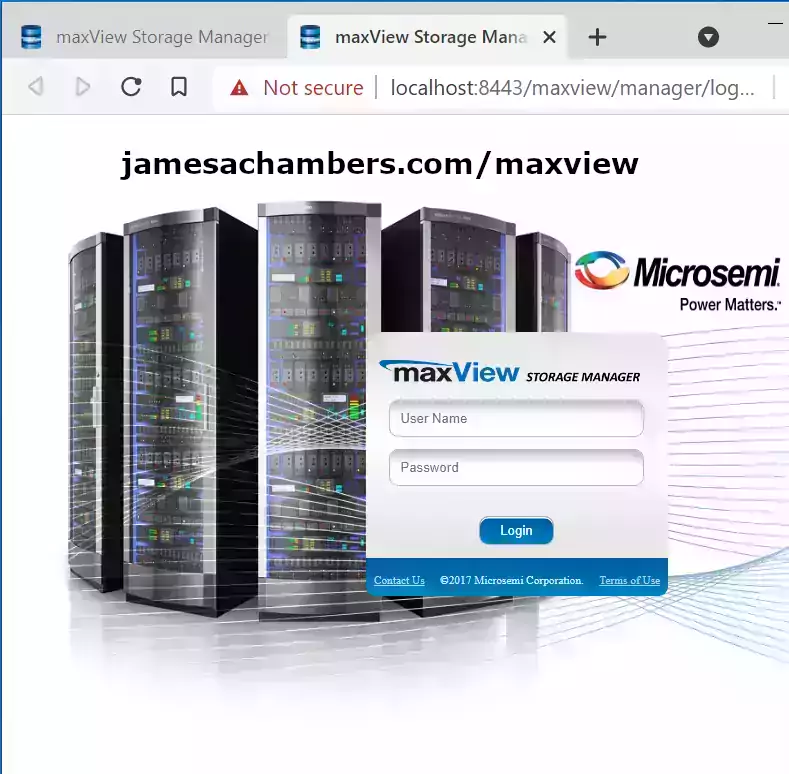
The default credentials will be your Windows / Linux local account credentials. If you are joined to a domain on Windows you will need to use the machine’s local administrator account. Go ahead and sign in.
Once you sign in you will be able to configure your arrays and settings:
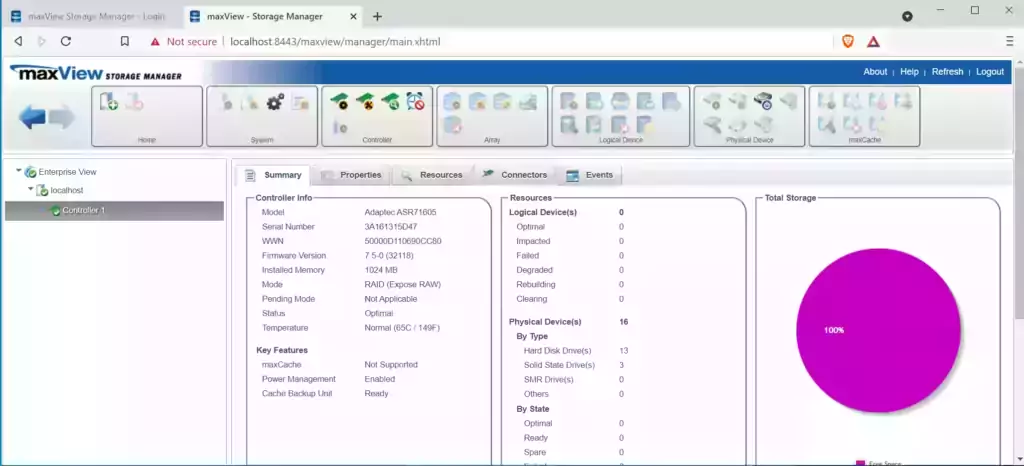
From this point configuration is pretty straightforward. Assign RAID arrays (if desired) and choose their type. Enable or disable write caching. The unit does come with a battery backup so it’s safe to turn on the fastest type of caching available since if the power is cut to the machine the battery backup will prevent you from losing any data.
Conclusion
The 16 bay enclosure is awesome but it requires a total of 2 5.25″ bays but requires a very expensive RAID card (4 SFF-8643 mini-SAS connectors doesn’t come cheap). My recommendation for everyone else would be to get the 8 bay version. That version takes a relatively inexpensive RAID card and still gives you a massive amount of bays. It also is more likely to fit in your setup since it only requires a single 5.25″ bay and 2 SATA power connectors.
It’s a major quality of life improvement for technicians / enthusiasts / developers who are working with a lot of drives. It’s very nice to be able to hot swap drives and be able to have them immediately be recognized by your OS! It’s also a great way to make use of old storage devices laying around if you have a bunch of old 2.5″ drives like me! It’s pretty expensive for CHIA mining so unless you have some really high capacity drives this is probably better for techs / devs / power users than cryptocurrency miners.
It’s rugged and made out of steel and the quality / performance have both been great. If you are in need of a device like this I would recommend this setup with an 8 bay for most people and a 16 bay for extreme cases!


